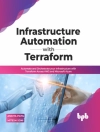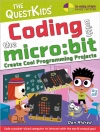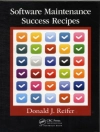A foreword for the present workshop proceedings cannot be provided without first looking at the larger context of the AMI conference in which the workshops were organized. The AMI 2007 conference has roots in preceding events, but in many respects, AMI can be called a novel conference format and hence a premiere. Among the several aims that inspired and shaped this new conference format, the following two are particularly worth considering: (1) to provide a forum for the ambient intel- gence flavor of research on the Post-PC era of computer science, complementing the ubiquitous computing and pervasive computing flavors emphasized by alrea- existing conferences; (2) to offer an event that attracts contributions from all over the globe yet emphasizes European strengths – with particular reference to the Infor- tion Society Technologies (IST) branch of the EU research framework programs (FPs), which carry the same label as the conference. The workshop organization chairs reflected these unique characteristics of the new AMI conference series in the call for workshop proposals using two corresponding measures: (1) by particularly soliciting workshops on in-depth topics corresponding to the above-mentioned ambient intelligence flavor of Post-PC research; (2) by offering two different workshop threads: one ‘usual’ thread for advanced topics (called “SW workshops”) and one thread for workshops related to concrete EU FP6 and FP7 p- jects (called “EU workshops”).
Содержание
Artificial Intelligence Methods for Ambient Intelligence.- Workshop Summary: Artificial Intelligence Methods for Ambient Intelligence.- AI Methods for Smart Environments.- A Survey of Semantics-Based Approaches for Context Reasoning in Ambient Intelligence.- Distributed Reasoning with Conflicts in an Ambient Peer-to-Peer Setting.- Model-Based Default Refinement of Partial Information within an Ambient Agent.- CAMPUS NEWS — Artificial Intelligence Methods Combined for an Intelligent Information Network.- Searching for Temporal Patterns in Am I Sensor Data.- Evaluating Ubiquitous Systems with Users.- Evaluating Ubiquitous Systems with Users (Workshop Summary).- Model Driven Software Engineering for Ambient Intelligence Applications.- Preface to MDSE4Am I 2007.- Modeling for Users.- Usability Aware Model Driven Development of User Interfaces.- An Agent-Based Generic Model for Human-Like Ambience.- Model-Driven Approach to the Implementation of Context-Aware Applications Using Rule Engines.- Multimodal User Interaction in Smart Environments: Delivering Distributed User Interfaces.- Distributed User Interfaces in Ambient Environment.- Supporting Ambient Environments by Extended Task Models.- Prototyping of Multimodal Interactions for Smart Environments Based on Task Models.- Challenges to the Model-Driven Generation of User Interfaces at Runtime for Ambient Intelligent Systems.- Smart Products: Building Blocks of Ambient Intelligence.- Smart Products: Building Blocks of Ambient Intelligence.- Smart Products: An Introduction.- Reasoning on Smart Products in Consumer Good Domains.- Proof of Possession: Using RFID for Large-Scale Authorization Management.- U-TOPIA: A Ubiquitous Environment with a Wearable Platform, UFC and Its Security Infrastructure, p KASSO.- Ambient Assisted Living.- Ambient Assisted Living Systems – Notes on a Plenary Discussion.- Attitudes and Requirements of Elderly People Towards Assisted Living Solutions.- Formal Design and Simulation of an Ambient Multi-agent System Model for Medicine Usage Management.- Concept and Design of an AAL Home Monitoring System Based on a Personal Computerized Assistive Unit.- Detecting Activities for Assisted Living.- BERNIE – Consultant for Nutrition and Intelligent Shopping.- Ambient Assisted Living in Rural Areas: Vision and Pilot Application.- Predictions for Epidemiologic Indicators of Age-Related Diseases and Implications for the Development of Health-Enabling Technologies.- Human Aspects in Ambient Intelligence.- First International Workshop on Human Aspects in Ambient Intelligence: Preface.- On Human Aspects in Ambient Intelligence.- The Use of Brain-Computer Interfacing in Ambient Intelligence.- Design and Validation of HABTA: Human Attention-Based Task Allocator.- Affective Human Factors Design with Ambient Intelligence.- Smart Home Technology for the Elderly: Perceptions of Multidisciplinary Stakeholders.- Enhancing Human Understanding through Intelligent Explanations.- Towards Natural Interaction by Enabling Technologies: A Near Field Communication Approach.- Model-Based Reasoning Methods within an Ambient Intelligent Agent Model.- Amigo.- Amigo Architecture: Service Oriented Architecture for Intelligent Future In-Home Networks.- Sharing Intelligent Services between Homes.- Amigo Aware Services.- Ambient Communication and Context-Aware Presence Management.- Amigo Context Management Service with Applications in Ambient Communication Scenarios.- Amigo Approach Towards Perceived Privacy.- Ontology Based Service Modelling for Composability in Smart Home Environments.- Amigo Interoperability Framework: Dynamically Integrating Heterogeneous Devices and Services.- WASP — Wirelessly Accessible Sensor Populations.- WASP – Wirelessly Accessible Sensor Populations: A Project Overview.- The WASP Architecture for Wireless Sensor Networks.- Conjoint PERSONA — SOPRANO Workshop.- Conjoint PERSONA – SOPRANO Workshop.- KDubiq Workshop.- KDubiq Workshop at the European Conference for Ambient Intelligence 2007.












